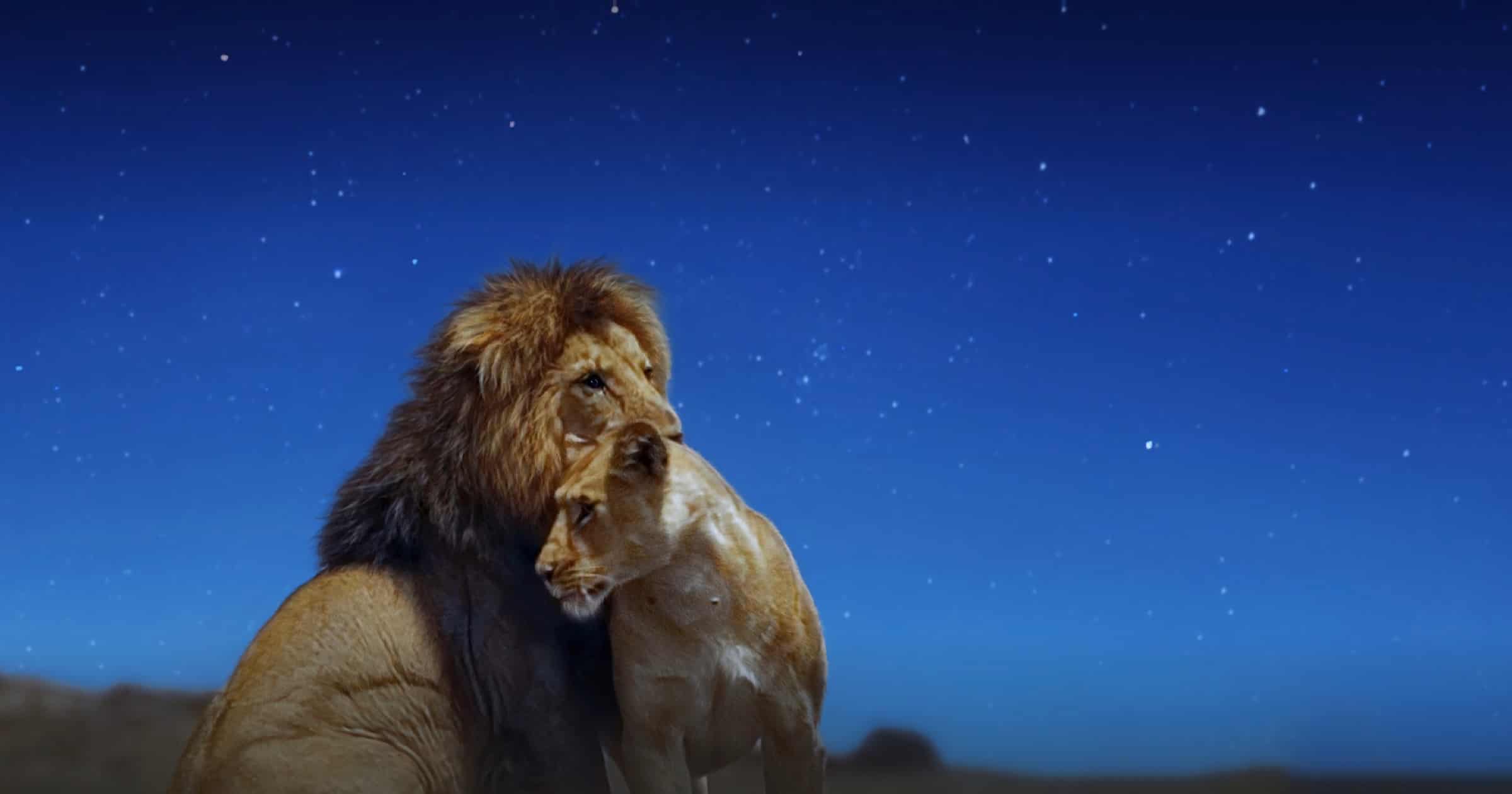Dark because it’s shot at night 😉
Earth At Night in Color
But as we’re reminded in each of the six episodes, it’s actually not dark. In spite of the camera crew following around animals and filming them at night, we get to see “Earth at night in color” because of these amazing low-light cameras. As I understand it they don’t work in pure darkness, needing at least the light of the moon to work.
The effect is almost eerie. We’re watching as these animals go about their lives and you would think it was shot in daylight were it not for stars twinkling in the sky. At the end of each episode we see a couple minutes of behind-the-scenes footage. The film crew never mentions exactly what cameras they’re using, but narrator Tom Hiddleston tells us they’re 100 times more sensitive than the human eye.
Here are the episodes:
- Lion Grasslands: After dark on Kenya’s Maasai Mara grasslands, a lioness won’t rest until she finds the young cubs she’s lost.
- Tarsier Forest: As darkness falls, a family of tiny primates in Sulawesi ventures into the jungle to find food while protecting their babies.
- Jaguar Jungle: A jaguar fights to keep his river home in Brazil as the night brings both challenges and opportunities to hunt.
- Bear Woodlands: In the boreal forest of Europe, a young brown bear clashes with wolves—and tires to find a mate beneath the stars.
- Wild Cities: When Los Angeles, Chicago, and Toronto light up at nightfall, they create world of opportunities for the cleverest animals willing to take the risk.
- Cheetah Plains: In Kenya’s Maasai Mara, two cheetah brothers attempt a high-speed night hunt with a gang of powerful hyenas on their trail.
Like most nature documentaries you feel sympathetic towards these animals and triumphant when they succeed. There’s a lion searching for her lost cubs for days, an injured jaguar trying to find food, and birds in cities that crash and die because skyscraper windows and lights confuse them. But there are funny moments too, like an angry elephant who’s had enough of the ruckus.
I was disappointed that there were only six episodes, but as the Apple TV page mentions season one we’ll be seeing more episodes in the future. The kill scenes are never gory and the mating takes place off-camera, so this series is good for the whole family.
